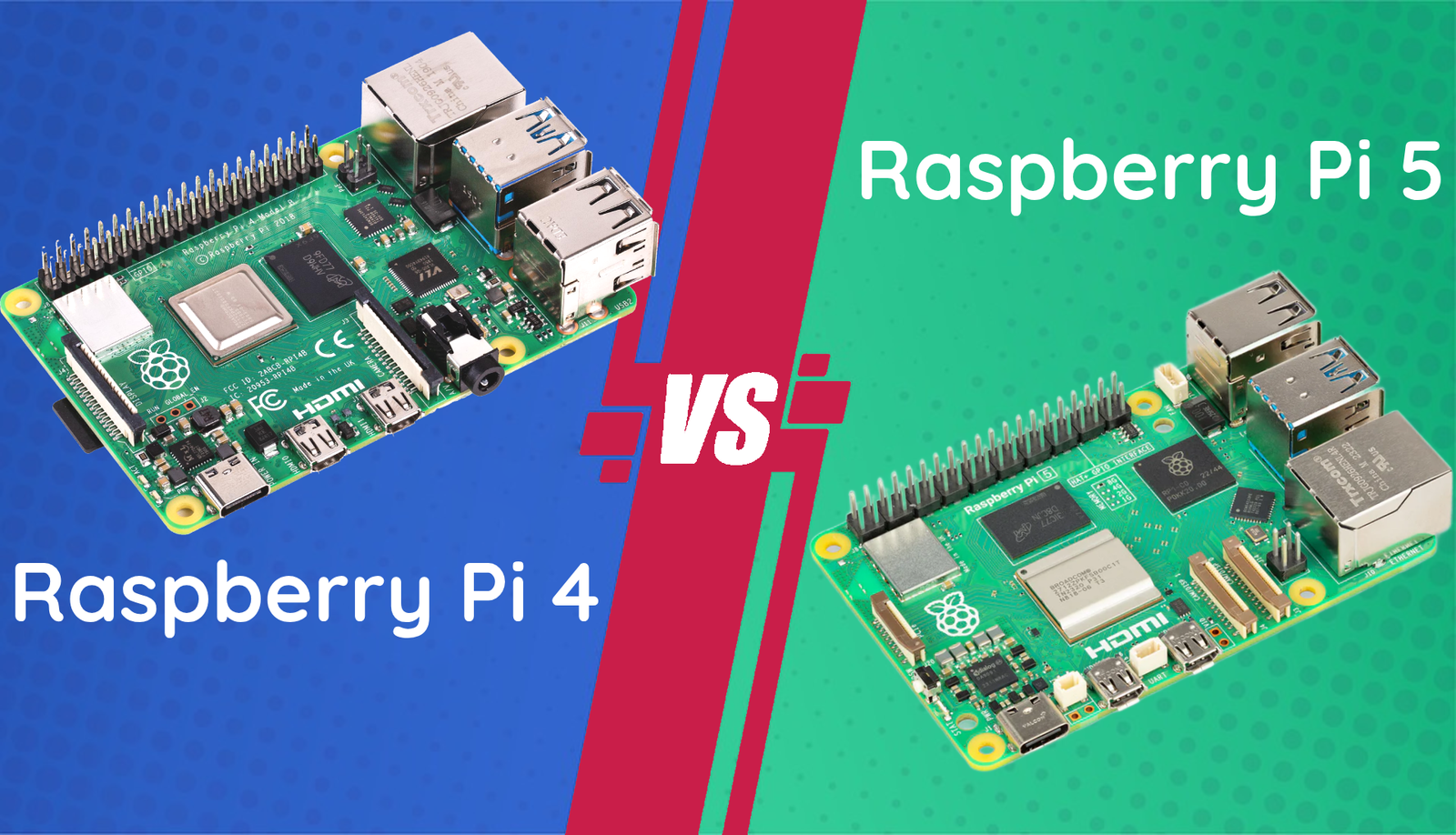With the launch of the Raspberry Pi 5, makers and tech enthusiasts around the world are asking one crucial question: Is the Raspberry Pi 5 worth the upgrade, or does the Raspberry Pi 4 still hold its ground? The Pi 5 comes with a higher price tag, but does that extra cost truly translate into a better experience? In this blog, we'll dive into the major differences between these two beloved boards and explore whether "more expensive" really means "better."
Key Specifications: A Quick Comparison
| Feature | Raspberry Pi 4 | Raspberry Pi 5 |
|---|---|---|
| Processor | Quad-core Cortex-A72 (1.5GHz) | Quad-core Cortex-A76 (2.4GHz) |
| RAM Options | 1GB, 2GB, 4GB, 8GB | 2GB, 4GB, 8GB |
| GPU | VideoCore VI | VideoCore VII |
| Connectivity | 2x USB 3.0, 2x USB 2.0 | 2x USB 3.0, 2x USB 2.0 |
| Video Output | 2x Micro HDMI | 2x Micro HDMI |
| Storage | microSD | microSD + PCIe slot |
| Networking | Gigabit Ethernet | 2.5 Gigabit Ethernet |
| Power Supply | 5V, 3A (USB-C) | 5V, 5A (USB-C) |
Performance: A Significant Boost
Processing Power:
The Raspberry Pi 5 takes a giant leap with its Cortex-A76 CPU, running at 2.4GHz, compared to the Cortex-A72 in the Pi 4, which tops out at 1.5GHz. This results in faster performance, whether you're running a desktop environment, doing heavy computations, or multitasking. The Pi 5 offers a significant boost in processing power, especially for more demanding applications like media centers, AI projects, and home automation setups.
Graphics:
The VideoCore VII GPU in the Raspberry Pi 5 is another upgrade, allowing smoother playback of 4K videos and more capable gaming performance compared to the older VideoCore VI on the Pi 4. If you're using your Raspberry Pi for graphical tasks like media streaming or even light gaming, this improvement is quite noticeable.
Memory: Enough for Most?
The Raspberry Pi 5 supports up to 8GB of RAM, similar to the Raspberry Pi 4, which also has variants in 2GB, 4GB, and 8GB options. For many users, even 4GB is more than enough for typical DIY projects, from basic coding tasks to running simple web servers. However, for server applications, heavy coding projects, or multi-tasking, the 8GB model may offer smoother performance, and it's available for both the Pi 4 and Pi 5.
Connectivity and Storage: The PCIe Advantage
One of the most exciting new features of the Raspberry Pi 5 is the addition of a PCIe slot, which opens the door to faster storage solutions like NVMe SSDs, something that was impossible with the Raspberry Pi 4’s microSD-only setup. This is a game-changer for those looking for high-speed data access, making the Pi 5 much more viable as a compact file server or network-attached storage (NAS) device.
On the networking front, the jump from Gigabit Ethernet on the Pi 4 to 2.5 Gigabit Ethernet on the Pi 5 means faster data transfers and a more robust experience for networking applications. However, this feature will only truly benefit those with network infrastructure capable of taking advantage of it.
Power Consumption: More Performance, More Power
With all the added performance comes increased power requirements. The Pi 5 requires a 5V, 5A power supply, compared to the 5V, 3A supply for the Raspberry Pi 4. While this doesn’t seem like a massive difference, it’s worth noting that higher power consumption could mean more heat, and you may need better cooling solutions, such as a dedicated fan or heatsink.
Use Cases: Who Needs What?
Raspberry Pi 4: Still a Solid Choice
For everyday tasks like learning to code, building IoT devices, and simple projects, the Raspberry Pi 4 is still an excellent choice. It’s cheaper, more widely available, and capable of handling most DIY applications without breaking a sweat. The 4GB or 8GB RAM models should suffice for most hobbyists and educators.
Raspberry Pi 5: A New Era of Power
However, if you're looking to push the limits of what a single-board computer can do—whether for high-performance computing, advanced AI applications, or as part of a high-speed networking system—the Raspberry Pi 5 is a significant upgrade. It’s particularly appealing for users needing high-speed storage options and better network performance.
Does More Expensive Mean Better?
The answer to whether the Raspberry Pi 5 is "better" than the Raspberry Pi 4 comes down to what you need from your board. For general-purpose applications, the Raspberry Pi 4 remains an excellent, affordable option. However, for those who require more processing power, faster storage, and the ability to handle more intensive workloads, the Pi 5 justifies its higher price tag.
So, does more expensive mean better? Yes, but only if you need the extra features. Otherwise, the Raspberry Pi 4 still offers incredible value for the majority of users.
Final Thoughts
Both the Raspberry Pi 4 and Raspberry Pi 5 are impressive boards in their own right. The decision to upgrade depends on your specific needs and whether those extra features and performance gains are essential to your projects. If you're just getting started, the Pi 4 might be all you need. But if you're a power user looking for more performance and future-proofing, the Pi 5 is well worth the investment.
Which one will you choose?

